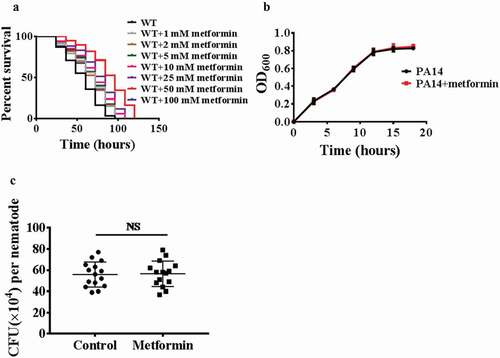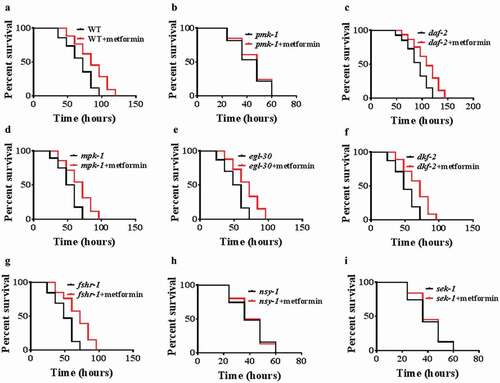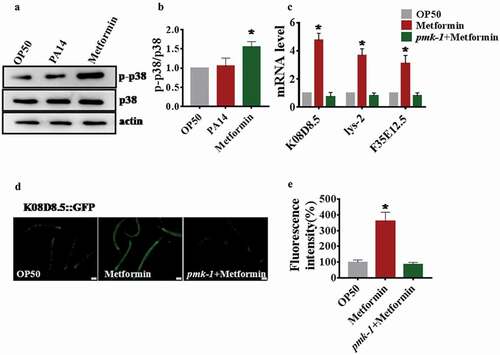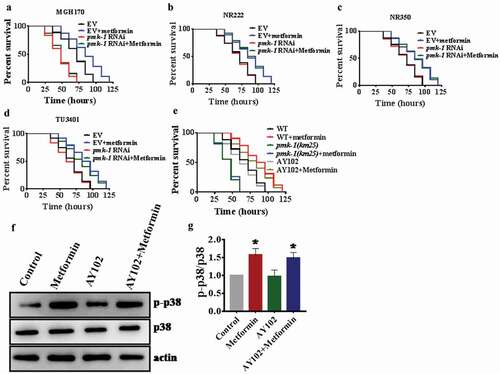Figures & data
Figure 1. Metformin enhances pathogen resistance

Figure 2. Metformin promotes innate immunity through the p38 MAPK pathway

Figure 3. Metformin activates p38 MAPK signaling in C. elegans

Figure 4. Intestinal PMK-1 enhances resistance to pathogen infection after metformin treatment

Figure 5. Metformin protected mice against P. aeruginosa infection and increased p-p38 in the lung

